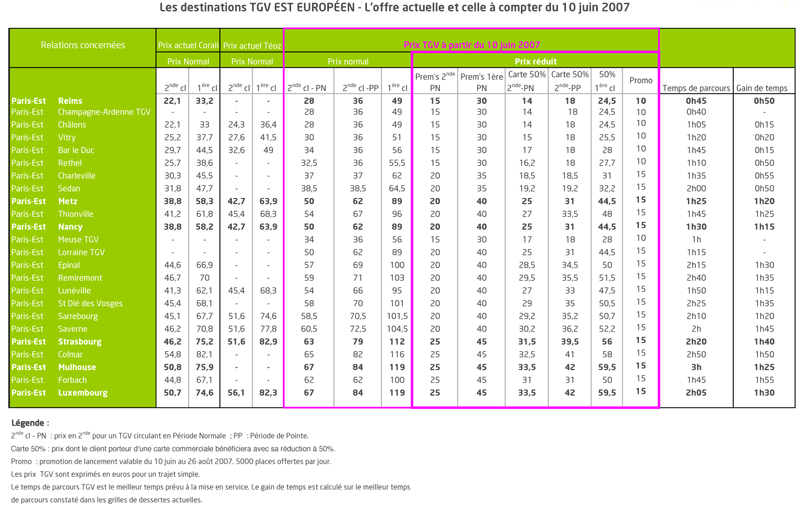jamesontheroad
OBS Chief
Sorry to keep harping on about it, but the green light was given earlier today for a full record attempt to be made. TOMORROW (Tuesday 3 April 2007) is the day.
You can watch the record attempt live online via the website of France 3 Television from 12h55 local time, 10h55 GMT, 05h55 EST, 02h55 PST at this link:
http://video-direct.france3.fr/player.php?id=25
Press release from AFP:
You can watch the record attempt live online via the website of France 3 Television from 12h55 local time, 10h55 GMT, 05h55 EST, 02h55 PST at this link:
http://video-direct.france3.fr/player.php?id=25
Press release from AFP:
02/04/07 16h21 GMT+1French train aims to break world speed record
Source: http://www.france24.com/france24Public/en/...j5&cat=null
France's high-speed TGV train will try to smash its own world record and reach speeds of up to 580 kilometres (360 miles) per hour Tuesday in a move that manufacturer Alstom hopes will help it trounce its Japanese and German rivals in a rapidly expanding market.
Weather conditions permitting, a black V150 train will rocket along a stretch of the new high-speed line between Paris and the city of Strasbourg on France's border with Germany.
The experimental version of the Train a Grande Vitesse (TGV) will aim to break the current 17-year-old record of 515.3 kilometres (320.2 miles) per hour.
The train has already broken the record in several test runs carried out since mid-January, reaching speeds of 559 kph, according to the SNCF state rail operator.
But these speeds have not been officially verified.
"Tuesday is the official day," said an SNCF spokesman. "There will be monitors in place, and we'll see what speed we can hit."
The current world speed record for a train was the 581 kph reached in 2003 by a Japanese magnetic levitation train. But Alstom says that as these trains do not use ordinary rail tracks, this record cannot be compared with what they are hoping to achieve Tuesday on the Paris-Strasbourg line.
The Velaro, a high-speed train built by the German electrical engineering giant Siemens, currently holds the world speed record for a regular commercial train. That record -- 404 kph -- was achieved last year.
The TGV record being attempted Tuesday, the culmination of several months of tests that have cost an estimated 30 million euros (40 million dolars), is on a specially modified experimental train.
"Beyond the technical exploit, this is part of an attempt to record data on the behaviour of the infrastructure and of the rolling stock in extreme conditions which are impossible to carry out in the laboratory," said a statement from the three partners involved in Tuesday's test, the SNCF, the network operator RFF, and Alstom.
Another aim of Tuesday's record attempt is to show off French engineering prowess and help boost Alstom's sales of TGVs abroad, in a multi-billion-dollar market that increasingly competes with regional air links and where Japan's Shinkansen and Germany's Siemens are major players.
"If we beat this record, that will put us in a good position with respect to our competitors who do not have this technology," said Philippe Mellier, the head of the Alstom's train unit.
China, Korea and Taiwan are already big customers for high-speed trains, and Turkey, Brazil and Argentina are also entering the market.
Currently, average travelling speeds for the TGV are around 300 kilometres per hour, but trains on the latest-generation Paris-Strasbourg line are to run slightly faster at 320 kilometres per hour.
Work began five years ago on the state-of-the-art Paris-Strasbourg TGV line, which opens to the public on June 10. One of the biggest rail projects in Europe, it mobilised some 10,000 workers and required 78,000 tonnes of steel -- enough to build eight Eiffel towers.






